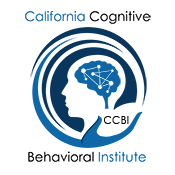Triangulation!
Triangulation is most commonly used to express a situation in which one family member will not
communicate directly with another family member, but will communicate with a family member (or outside friend, acquaintance), forcing that third person/party to then be part of the triangle. The concept originated in the study of dysfunctional family systems, but can be described in other systems as
well, including work.
Triangulation can also be used as a label for a form of “splitting” in which one person plays the
third family member against one that he/she is upset about. This is playing the two people against each other, but usually the one person doing the splitting, will also engage in “character assassination” of the victim.
Show me someone who doesn’t have relationship problems and I’ll show you someone who doesn’t
have a relationships. Problems are a natural part of relationships because people are involved, and people…aren’t perfect. When we encounter a problem, how do we decide where it came from, so we can resolve it? That is what relationship triangulation is all about!
Where did the relationship problem start?
Many of us go through life just like children, saying, “He started it!” Think back through all your recent arguments. Were there any in which you felt you were wrong? That’s the nature of argument, isn’t it? We’re right and they’re wrong! Problem is, that’s what they think, too. So, a mature person will admit the possibility of being wrong. Oh no! I don’t mean you’re wrong..maybe you were right but didn’t express your rightness right! So, now where do we stand? Despite the fact it always feels like the other person is at fault, you could be the source of the problem or they could. How do you figure out which? That’s where triangulation comes in!
Triangulation targets relationship problems:
We learned about triangulation during Gulf War I, where “smart weapons” were guided using three
points (triangle corners) to bring the payload to the precise target. The three points were the target, the shooter, and a third point away from the target and shooter. The weapon uses this triangle to adjust its flight and hit the target. Now, don’t get ahead of me, this doesn’t mean you can solve problems with your
spouse by bombing them. Relationship triangulation can target the source of the problem using three points: yourself, the one with whom you have a problem, and a third person. Thought the problem never feels like you’re the cause, using triangulation and honesty, you can easily rule yourself in or out. If you find yourself having the same kind of problem with more than one person, then you can triangulate back to yourself as a cause. This doesn’t mean that they aren’t wrong, just that a significant part of the relationship problem rests with you. Now you have a way, other than people pointing fingers, to figure out if you’re aggravating the problem, but here’s the big part…you also know objectively when you’re not. Just think back over previous relationship problems with others and look for similarities. If you find them, this is invaluable in helping you fix the things that need fixing in you, in order to prevent future problems. And, after all, you’re the only one you can fix.
Advice if you are part of the problem:
Once you’ve identified two or more people you have the same problem with, triangulation is a powerful
tool to determine just what causes you to react to these people that way. That’s because you have more than one incident to look at. What is it they did or said that triggered your negative emotions? What memories come up from your past when those emotions are triggered? As you think about these things, you may just hit on the one event that is causing the emotional problem every time someone behaves similarly. For example, because I was abused as a child, I get very angry every time someone seems to pressure or manipulate me. Knowing this, I can often head off my anger if someone I love just wants something strongly.
Advice if you are not part of the problem:
Triangulation is very powerful in determining you’re not part of the problem, too, saving you
the wasted effort of trying to fix something in yourself that’s broken in someone else. This is very liberating! Those who are just passing through your life can be dismissed as having a bad day. For those who are important to you, knowing the problem originates with them keeps you from being defensive and provides valuable insight into accommodating their needs and helping them to find peace.
So many times, when we’re faced with a relationship problem, we’re left with just being angry and staying away until we cool off. Now, the problem becomes a valuable took in self-improvement, problem solution and problem prevention. Whether triangulation reveals the cause is with you or another, the above advice gives you real options other than relationship separation or sweeping things under the rug.
SOCIOPATHIC TRIANGULATION
The sociopathic relationship has rigid, negative, and blaming as part of it. Normal families
will move around the triangle, with each playing one of the parts. But in the sociopathic relationship, there is no movement and the victim is always at the bottom of the triangle which is upside down.
Sociopathic
Relationship: Perpetrator Rescuer Normal Relationship: Perpetrator
/ /
Victim Victim Rescuer

